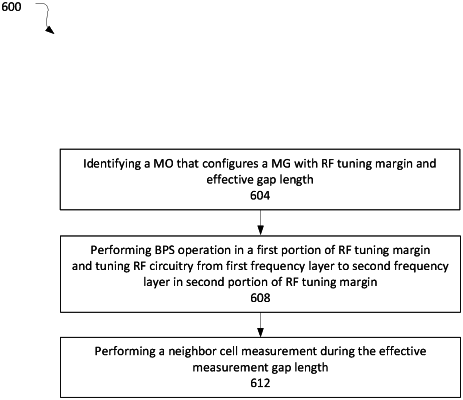| CPC H04W 24/10 (2013.01) [G01S 7/006 (2013.01); G01S 13/003 (2013.01); G01S 13/04 (2013.01)] | 20 Claims |

|
1. A method comprising:
identifying a measurement object that configures a measurement gap with a radio frequency (RF) tuning margin and an effective measurement gap length;
performing a body proximity sensing (BPS) operation in a first portion of the RF tuning margin;
tuning RF circuitry from a first frequency layer to a second frequency layer during a second portion of the RF tuning margin; and
performing a measurement during the effective measurement gap length.
|
|
8. One or more non-transitory, computer-readable media having instructions that, when executed, cause processing circuitry to:
identify a measurement gap to be used for a measurement on a target frequency layer;
identify, based on a timing of a reference cell on the target frequency layer, first symbols within the measurement gap that are associated with synchronization signal block (SSB) or channel state information-reference signal (CSI-RS) transmission; and
perform a body proximity sensing (BPS) operation during one or more symbols in the measurement gap, wherein the one or more symbols do not include the first symbols.
|
|
15. One or more non-transitory, computer-readable media having instructions that, when executed, cause processing circuitry to:
receive an indication of a capability of a user equipment (UE) to perform body proximity sensing (BPS) operations based on a measurement gap configuration;
determine a threshold number of resources for the UE to perform the BPS operations in a period of time;
determine, based on the capability and the threshold number, that a number of resources available based on the measurement gap configuration is insufficient for the UE to perform the BPS operations in the period of time; and
provide a configuration to the UE based on said determining that the number of resources available based on the measurement gap configuration is insufficient.
|